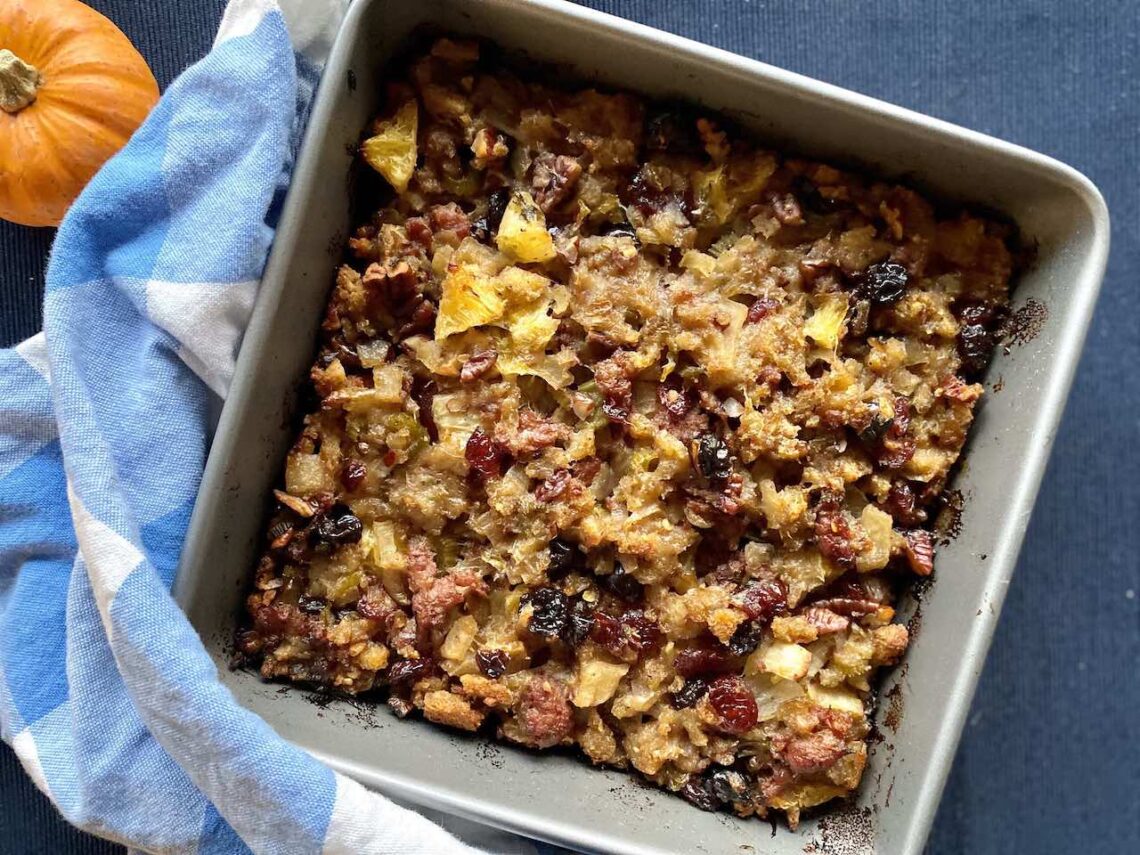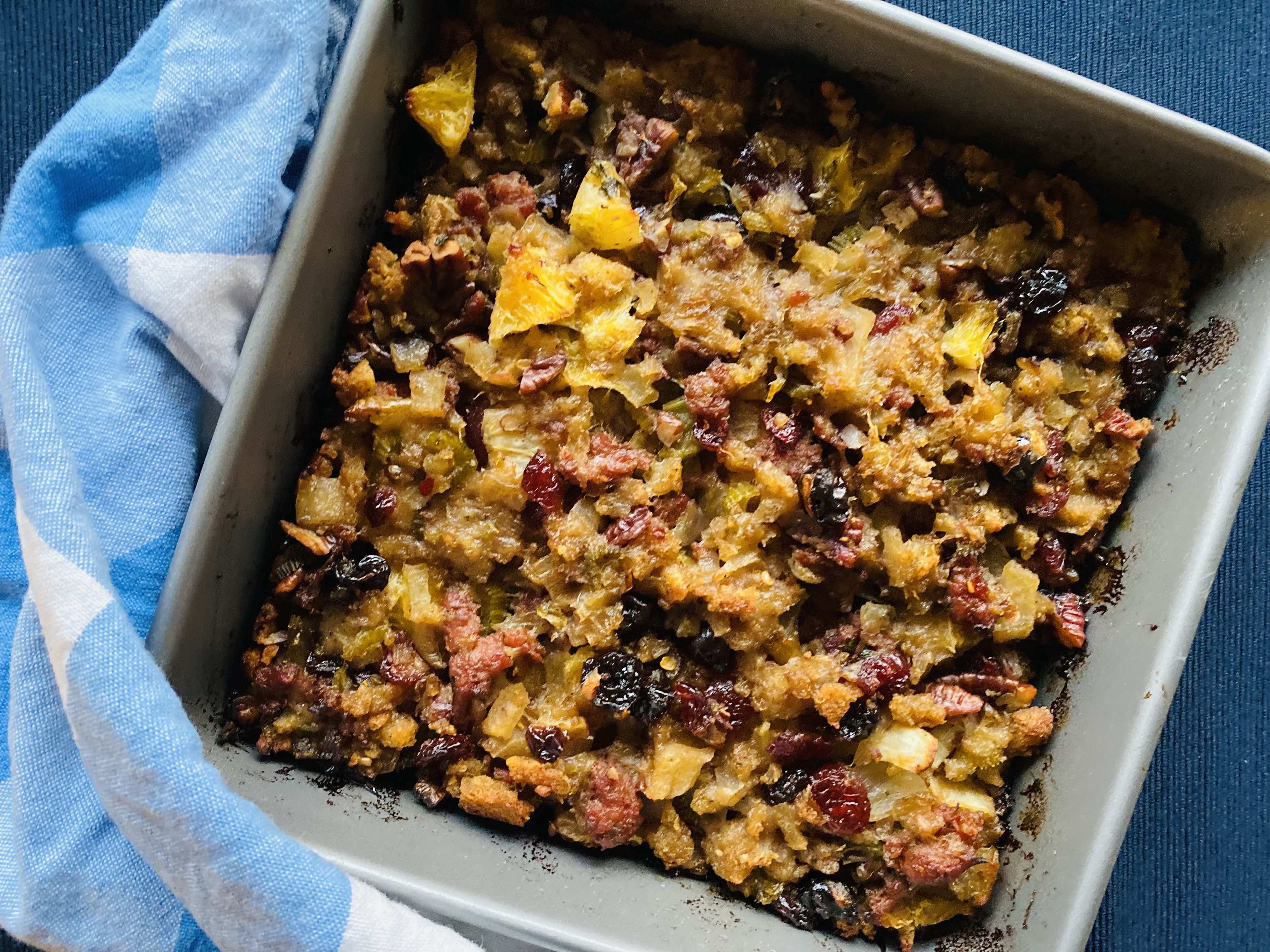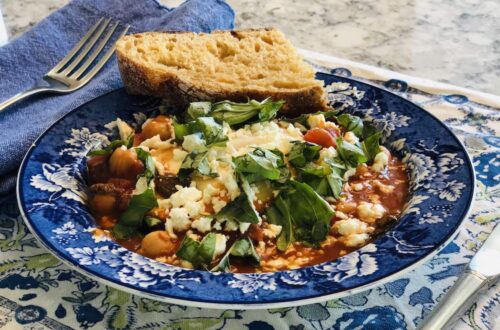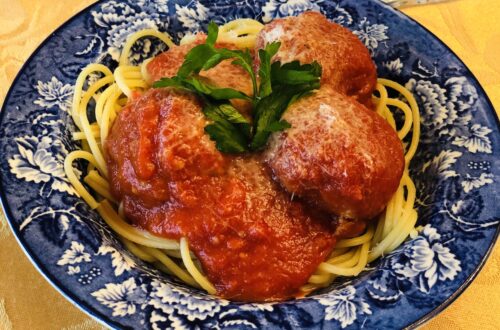
The Very Best Thanksgiving Stuffing
I absolutely love Thanksgiving, probably because it’s only about eating delicious food with friends and family. Unfortunately, I’ve missed Thanksgiving for most of the past decade. Between living in Berlin and traveling to Geneva for conferences (I can’t complain about either), there haven’t been too many years that I’ve been in the US and able to cook. But that hasn’t stopped me from starting Thanksgiving 2.0, the Second Night of Thanksgiving, or Belated Thanksgiving as we call it – a night weeks after Thanksgiving when I invite friends over and cook an entire Thanksgiving meal.
This stuffing is key to my Thanksgiving dinner, whenever it takes place. I’ve been making variations of it since I was a teenager, but this is a more interesting version with more tartness to balance the sweetness of Thanksgiving food. This recipe can easily be doubled and should be if you are cooking for more than immediate family. But be warned that a double recipe makes enough stuffing for a small army.
Since I don’t cook much with pork, I’m grabbing this opportunity to talk about our atrocious meat industry. (Please note that I got this far in the post and then took a multi-hour break before even googling “pork production.” I then googled it, got up from my computer, got a snack, and finally returned.) Needless to say, I understand everyone who skips reading this post and doesn’t want to know how the sausage is made. Let’s start with the obvious. Pork production is incredibly bad for the environment, for climate change, and for human rights. And yet, it’s a huge industry, worth $23 billion just in the US.
Iowa is the largest pork producing state, raising about one-third of all hogs in the US. Today, pork production is highly consolidated, with only three companies – Smithfield, Tyson, and JBS – controlling 61 percent of the hogs slaughtered in the US. (It’s also noteworthy that Smithfield, the largest pork producer, is owned by the Chinese company WH Group, and JBS USA, the third largest, is owned by the Brazilian company JBS. (Globalization doesn’t only lead US companies to go abroad and commit abuses – it also lets foreign companies come into the US and harm the environment!)
There has been a gigantic shift in the pork industry since the early 1990s, as consolidation has sped up, with just a few companies buying up the many smaller companies that used to exist. Back in the 1990s, 87 percent of hogs were sold on the open market, meaning they were bid on rather than sold in advance on contract. These days, only 2 percent of hogs are sold on the open market – the overwhelming majority are sold on contract with large companies that require hogs to be raised under certain conditions. As companies have consolidated their control and open market sales have decreased, the price of hogs has dropped. This, in turn, has led to a stark decrease in hog farmers, from 243,000 in 1987 to just 66,000 in 2017.
This decrease in the number of farms and sale on the open market is a result of the growth of factory farming, or CAFOs (Concentrated Animal Feeding Operations). These massive farms hold thousands of hogs each in inhumane conditions (more on that in another post) – and they produce massive amounts of waste. One hog produces three times as much waste as a human. This waste is held in massive pits, or lagoons, and often used as fertilizer for crops. However, these massive CAFOs actually produce too much waste so that it can’t all be used, or at least used properly. As a result, the waste can contaminate local water sources, groundwater, and can even flow into the Gulf of Mexico causing dead zones.
Additionally, these CAFOs produce a horrific smell that can make it all but impossible to be outside near them. This is a problem for community members who live in places where companies build CAFOs. It’s unpleasant, decreases the value of your home, and causes health issues. There is evidence that living near hog operations can be detrimental to your health. For instance, one study in North Carolina found that people living near clustered confinements “had lower life expectancy and higher rates of infant deaths, asthma, kidney disease, tuberculosis, and blood poisoning than those who lived further away.” A study in Ohio found that people who lived within 1.9 miles of a hog facility and manure lagoon had “higher rates of neurobehavioral and pulmonary impairment … than in a control group in Tennessee.” In Iowa, it has been known that there are often dangerous levels of ammonia near hog sites, “which causes burning in the eyes and respiratory tract as well as chronic lung disease.”
I know that most of us eat pork, at least occasionally. I probably won’t stop eating bacon and prosciutto – in large part because I can trick my brain into thinking those aren’t actually pork. But even if I likely won’t give up eating it, it’s important to know how pork is actually produced. Both as individuals and as a society, we should do a better job of understanding the mass production food system so that we can make decisions based on that knowledge.
The Very Best Thanksgiving Stuffing
Course: Recipe, Side8
servings1
hour45
minutesAdapted from an old recipe by Julie Song for Sausage Stuffing on Food Network’s website.
If you are having a big Thanksgiving or using this recipe to stuff a chicken or turkey and make oven-baked stuffing, double this recipe. If you are having a more intimate meal or want to make this with a roast chicken one night, stick to these proportions.
This recipe is quite adaptable. You can use store-bought or homemade breadcrumbs, whatever dried fruit you’d like, pork or chicken sausage, any type of apple, and more or less of any ingredient depending on your tastes and what’s in your cupboard.
Ingredients
1/2 pound sweet or spicy Italian sausage, casings removed (or buy without casings at the butcher counter)
4 tablespoons of butter
1 1/2 cups of yellow or white onion, chopped
1 cups celery, chopped
2 tablespoons fresh sage, parsley, thyme, or another herb, chopped
1 cup dried cherries or cranberries, coarsely chopped
1/2 cup pecans, finely chopped
1 apple, finely chopped
1 orange, roughly chopped
3 cups croutons, store-bought or homemade
1/2 teaspoon ground allspice (optional)
2 tablespoons maple syrup
1 cup chicken stock, plus extra as needed
Salt and pepper to season
Directions
- Preheat the oven to 350˚F.
- Sauté the sausage in a skillet over medium-high heat. Crumble the sausage as you cook it and make sure it is fully cooked. When the sausage is cooked, remove it from the pan and put it aside in a large bowl.
- If there is a lot of fat in the pan, discard some of the fat so there is a thin layer remaining. If there is only a thin layer, leave it to cook the vegetables in.
- Heat the same skillet over medium heat and add the butter. Once it has melted, add the onion and celery. Sauté for about 10-12 minutes, until both are tender.
- Add the cooked onions and celery to the large bowl with the sausage, along with the fresh herbs, dried cherries, pecans, apple, orange, croutons, and allspice. Mix to combine evenly, then add the maple syrup and chicken stock. At this point the mixture should be moist, but not soggy. Add more chicken stock, if necessary.
- Transfer the stuffing to a baking dish and cover with aluminum foil.
- Bake for 1 hour, then uncover and bake for another 15 minutes, or until the top is golden.





